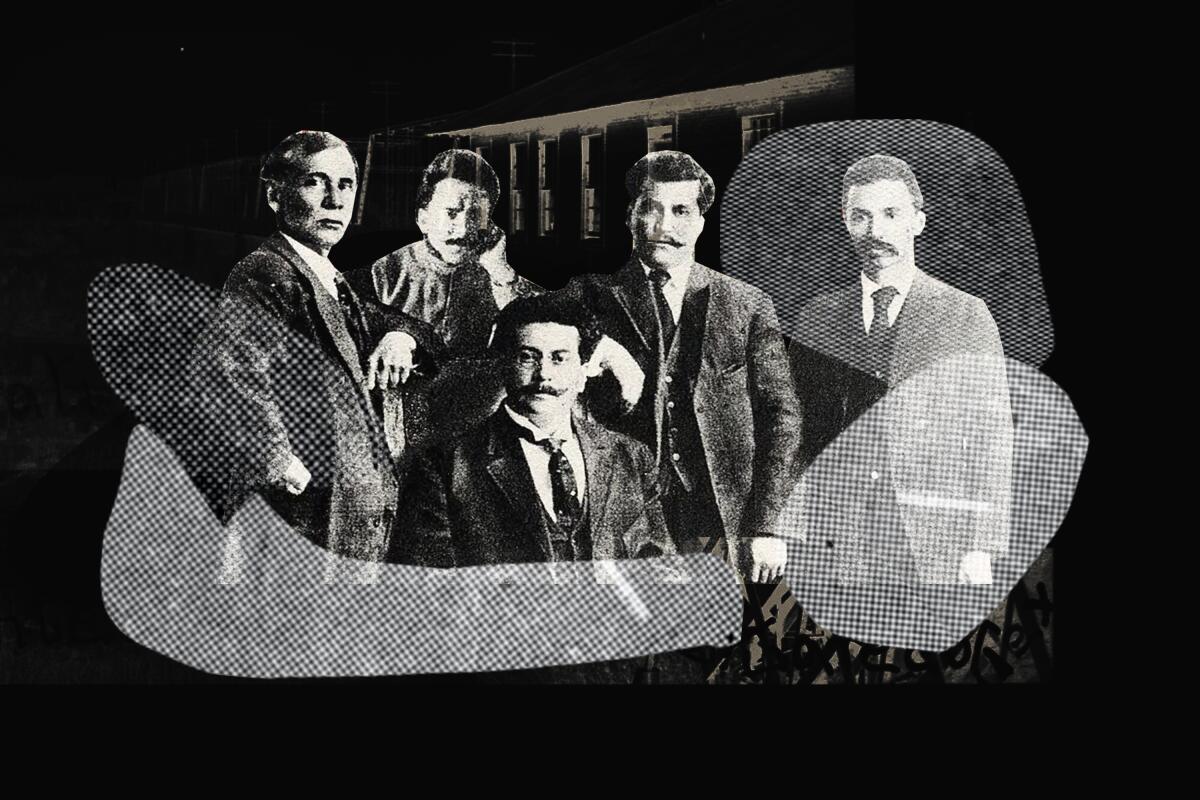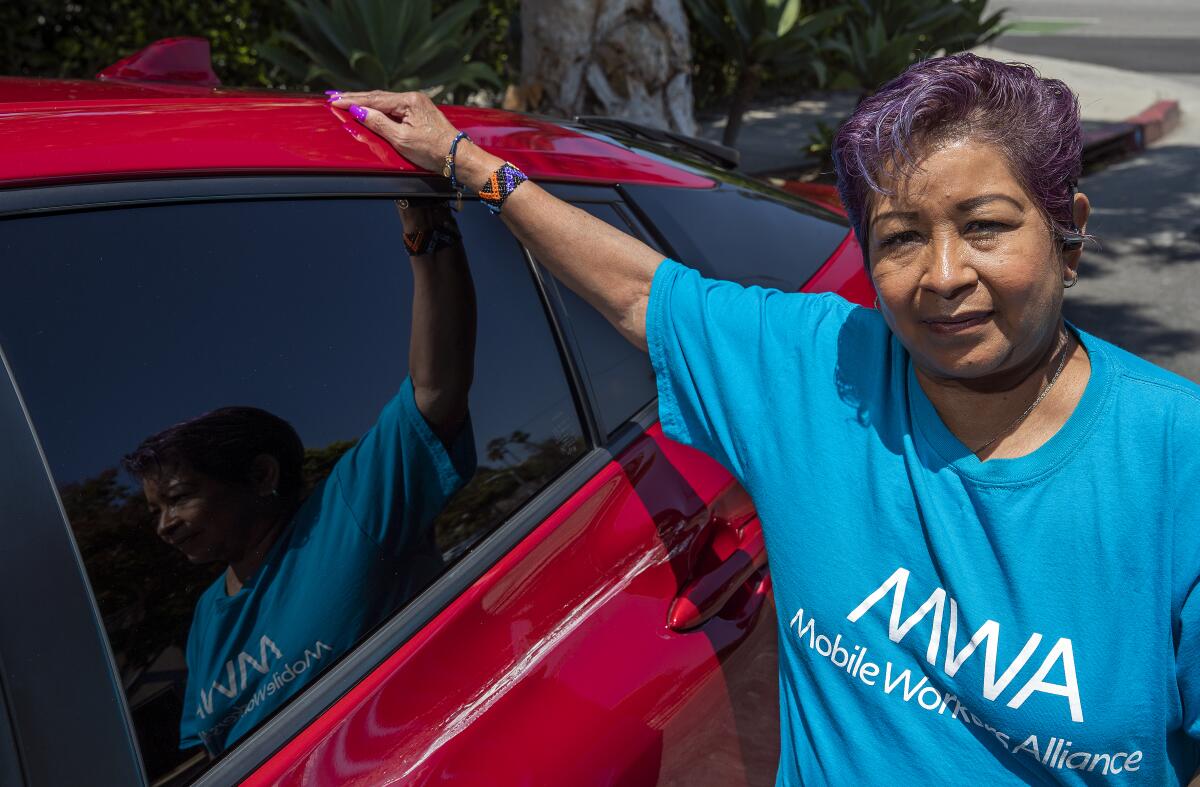Latinx Files: The ‘Bad Mexicans’ who made U.S. and Mexican history

On the Shelf
Bad Mexicans
By Kelly Lytle Hernández
Norton: 384 pages, $30
If you buy books linked on our site, The Times may earn a commission from Bookshop.org, whose fees support independent bookstores.
“Bad Mexicans: Race, Empire, and Revolution in the Borderlands,” the latest book by historian Kelly Lytle Hernández, starts off with the lynching of Antonio Rodríguez in Rocksprings, Texas.
The 20-year-old Mexican ranch hand was taken by a mob and burned alive on Nov. 4, 1910. The extrajudicial murder was by no means an isolated incident — there is a long history of Mexicans and Mexican Americans being lynched at the border — though it did prove to be particularly consequential. His death led to anti-American protests in Mexico, where there was growing consensus that the dictatorship of Porfirio Díaz had placed the interests of American capitalists above its own citizens.
Weeks later, on Nov. 20, 1910, the Mexican Revolution began.
The lynching of Rodríguez isn’t some new historical discovery. As Lytle Hernández — a professor of history, African American studies and urban planning at UCLA, and a 2019 recipient of the MacArthur Fellowship (the so-called “genius grant”) — explained to me, “many Mexican scholars who’ve written about the Mexican Revolution acknowledge the murder of Antonio Rodríguez as a precursor to the revolution.”
“The only thing I’m doing with this book is taking everything and pivoting and positioning it within the context of U.S. history.”
That’s the central premise of “Bad Mexicans,” the idea that Mexican and U.S. histories aren’t isolated from each other but are so intertwined that you can’t separate them. Rodríguez’s lynching is just one of many examples that prove her thesis. The book itself focuses on the magonistas, a group of anarchist and socialist dissidents led by the Flores Magón brothers, who fled Mexico and came to the United States to successfully incite a revolution against the Porfiriato via their outlaw newspaper, Regeneración. Much of this story takes place in cities I’m familiar with — Laredo, San Antonio and Los Angeles, to name a few — but knew very little about.
The Latinx experience chronicled
Get the Latinx Files newsletter for stories that capture the multitudes within our communities.
You may occasionally receive promotional content from the Los Angeles Times.
Over the course of 300-plus pages, Lytle Hernández tells the story of Porfirio Díaz’s rise to power, how his dictatorship resulted in the pillaging of Mexico’s wealth by American industrialists, how said power was challenged by marginalized people (laborers, Indigenous communities and women), and how the American government went out of its way to capture this group of Mexican revolutionaries who threatened to topple a regime that had greatly benefited some of the most powerful and wealthy American citizens.
And though “Bad Mexicans” meets the rigors of academia, it is by no means dull. Rather, the book has the cadence of a corrido lyrically outlining the extraordinary feats of ordinary people. It is full of details so outrageous and wild that you’d be convinced they were made up if it weren’t for the citations Lytle Hernández provides. For instance, did you know that one of the first assignments of the FBI was to go after the magonistas, or that the Flores Magón brothers’ beef with the Mexican dictator stemmed from a personal grudge related to their father?
I asked Lytle Hernández, who is Black and isn’t Mexican American or Latinx, why she felt compelled to write this book.
“I grew up on the border and no one could ever tell me who my neighbors were,” she said of her San Diego upbringing.
“I’ve always wondered why the Mexican kids were treated really [poorly] in similar ways that Black kids were being treated, and I’ve spent an entire career trying to figure that out. How did we get here together, how did we have these shared struggles, or at least extremely similar struggles?”
Her hope is that Mexican American audiences read the book and feel entitled to claim their place in American history.
“What if you put in every child a sense of ownership and entitlement, and I mean the beautiful type, the one that makes you say, ‘I’m a piece of this.’ What happens then? I am hopeful that if we continue to do this work as cultural workers, historians and teachers, we can help more generations to feel and know their story. That’s a power. It’s not everything, but it’s something that every child should have, access to the stories about how they fit.”
It’s been a few weeks since I read “Bad Mexicans,” but I haven’t been able to stop thinking about it. Early in our conversation, I told Lytle Hernández that her book radicalized me. I meant it as a joke, but as time has elapsed, it has dawned on me how much I meant it. The book has fundamentally changed the way I see the world, the way I see myself in this country.
Here’s an example: I was recently in New York City for a conference. During a period of free time, I found myself by Central Park and decided to go to the Solomon R. Guggenheim Museum because I’d never been before. It was a beautiful space filled with wonderful paintings, and I certainly enjoyed myself. But as I walked up that Frank Lloyd Wright-designed spiral taking in Eurocentric art, I couldn’t ignore the nagging question growing louder inside me: How much of this museum was funded by the wealth extracted from Mexico by the Guggenheim family?
Consider subscribing to the Los Angeles Times
Your support helps us deliver the news that matters most. Become a subscriber.
Will anything substantial come from the Summit of the Americas?
The ninth Summit of the Americas is taking place right now in Los Angeles. The meeting of dignitaries from the Western Hemisphere was supposed to be an opportunity for the United States to “counter China’s growing clout in the region, repair relationships damaged during the Trump administration and stem the flow of migrants at the southern U.S. border.” Instead, the summit has turned into a diplomatic embarrassment for the US. after Mexico’s President Andrés Manuel López Obrador decided to boycott the event.
AMLO might not be present, but protesters certainly are. As my colleague Soudi Jiménez reported Tuesday, dissidents took to the street to condemn strongmen such as El Salvador’s Nayib Bukele and Nicaragua’s Daniel Ortega. About 425,000 Salvadoran Americans and 39,000 Nicaraguan Americans call Los Angeles home.
But will anything come from this summit? Not really, according to some of the workers keeping the conference humming along.

“They just meet within four walls and talk amongst themselves. That’s all,” Reyna Hernandez, a 61-year-old Uber and Lyft driver, told The Times’ Cindy Carcamo. Hernandez moved to the United States from Puebla, Mexico, in 1995.
“Yes, sure, they talk about important themes. They’ve done that for years, but they don’t come up with real solutions. I don’t really see these governments caring for their people.”
Things we read this week that we think you should read
— Author Daniel A. Olivas grew up in Los Angeles without reading stories that resembled his, so he decided to become an author and write his own. Read his L.A. Times op-ed.
—In case you missed it: Last week, my colleagues Brittny Mejia, Anh Do and Sandhya Kambhampati wrote about Asian-Latinx families, which represent the future of California.
— Just in time for graduation season, here are two recent Times stories that will inspire you. As Column One Editor Steve Padilla aptly put it, “One literally brings smiles and the other one tears.”
— Janette Villafana of L.A. Taco is reporting that more than 150 vendors and food truck owners are facing eviction from a Cypress Park commissary because its owner is shutting it down. The closure could jeopardize the vendors’ ability to operate above board — in order to get a health permit, vendors are required to rent a space in a commissary for their carts or trucks. This story is also available in Spanish.
— According to a new report, female, Black and Latinx nonfaculty workers at California State University are paid less than their white counterparts. Story by Nathan Solis.
— Here’s some good news: After shutting down for a few weeks, the Bell Gardens restaurant Tamales Elena y Antojitos is back in business. Story by Stephanie Breijo.
— I’m not a Lakers fan, but I certainly feel the same way about the Celtics as most Angelenos do. My disdain for Boston sports has me cheering for the Golden State Warriors in the NBA Finals. That fellow paisa Juan Toscano-Anderson, the first Mexican citizen to play in the championship, is a Warrior is only icing on the top.
The best thing on the Latinternet: Alex Padilla did the work, literally
Last fall, United Farm Workers invited U.S. senators to spend one day working alongside agricultural workers as part of their “Take Our Jobs” campaign. Last Friday, California Sen. Alex Padilla took the UFW up on its offer and spent the day en la pisca in Moorpark.
“Today I experienced just a small taste of the demanding work that farm workers do every day to keep millions of families in America fed,” Padilla told Daily Kos. “I was here for just one day, but the people I worked alongside are here every day toiling, often under the hot sun, to make sure there’s food in our stores and on our tables.”
Padilla deserves credit for not just walking the walk but also backing legislation that would provide pathways to citizenship for these essential workers. Want to find out more? The Daily Kos has you covered.
The Latinx experience chronicled
Get the Latinx Files newsletter for stories that capture the multitudes within our communities.
You may occasionally receive promotional content from the Los Angeles Times.




